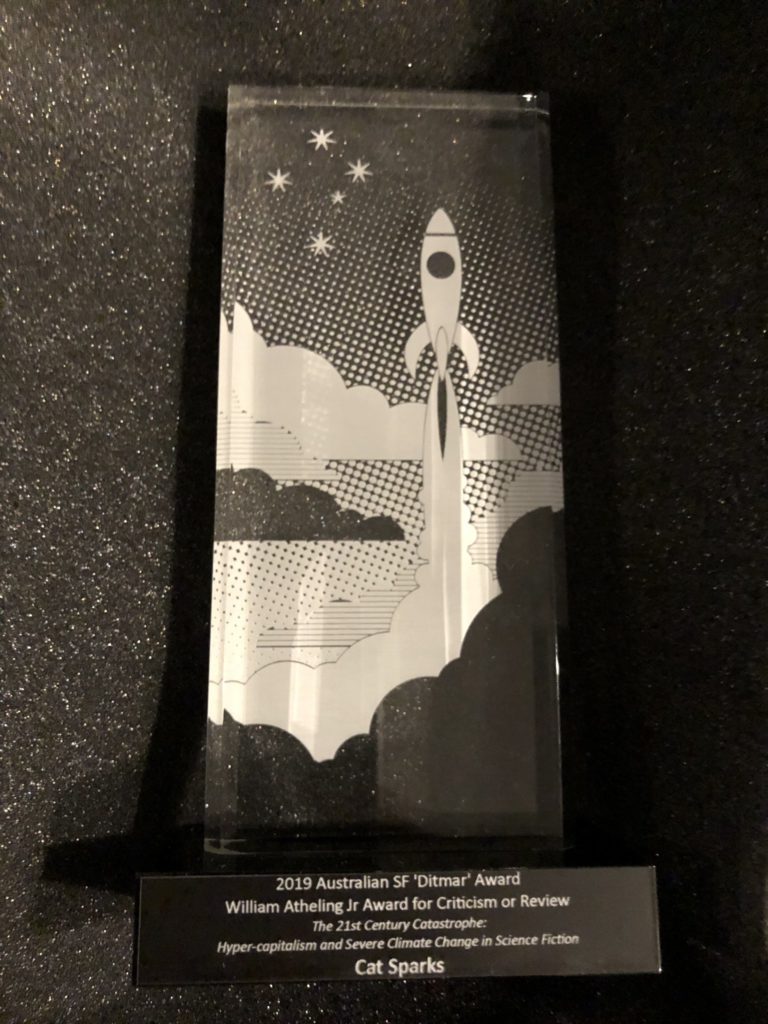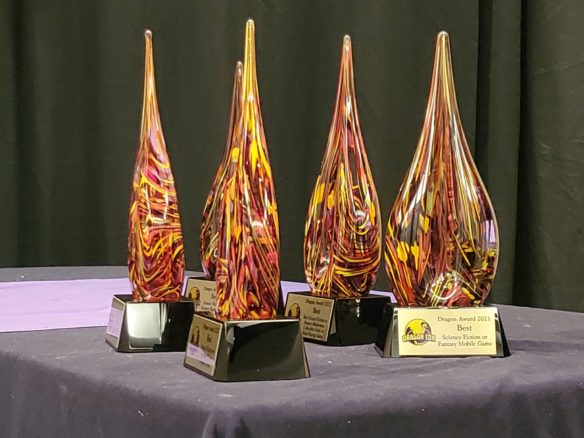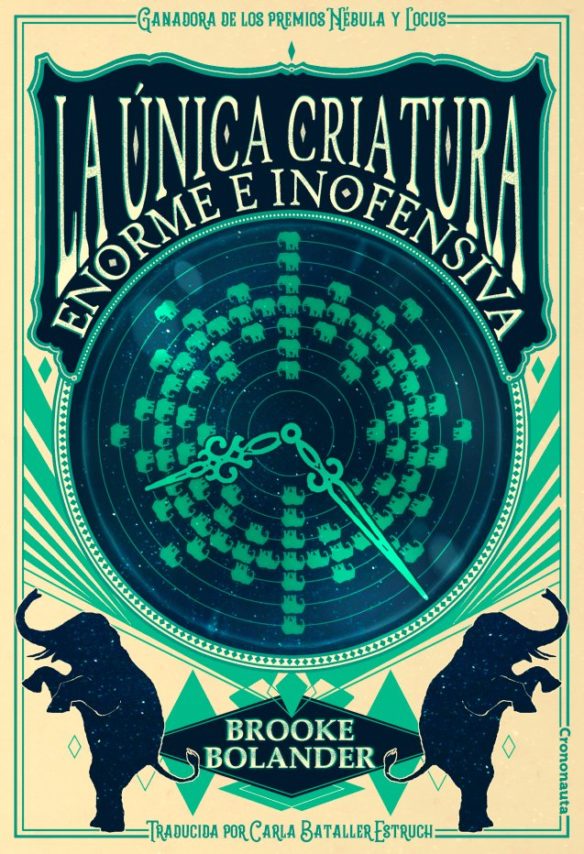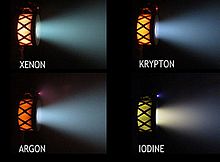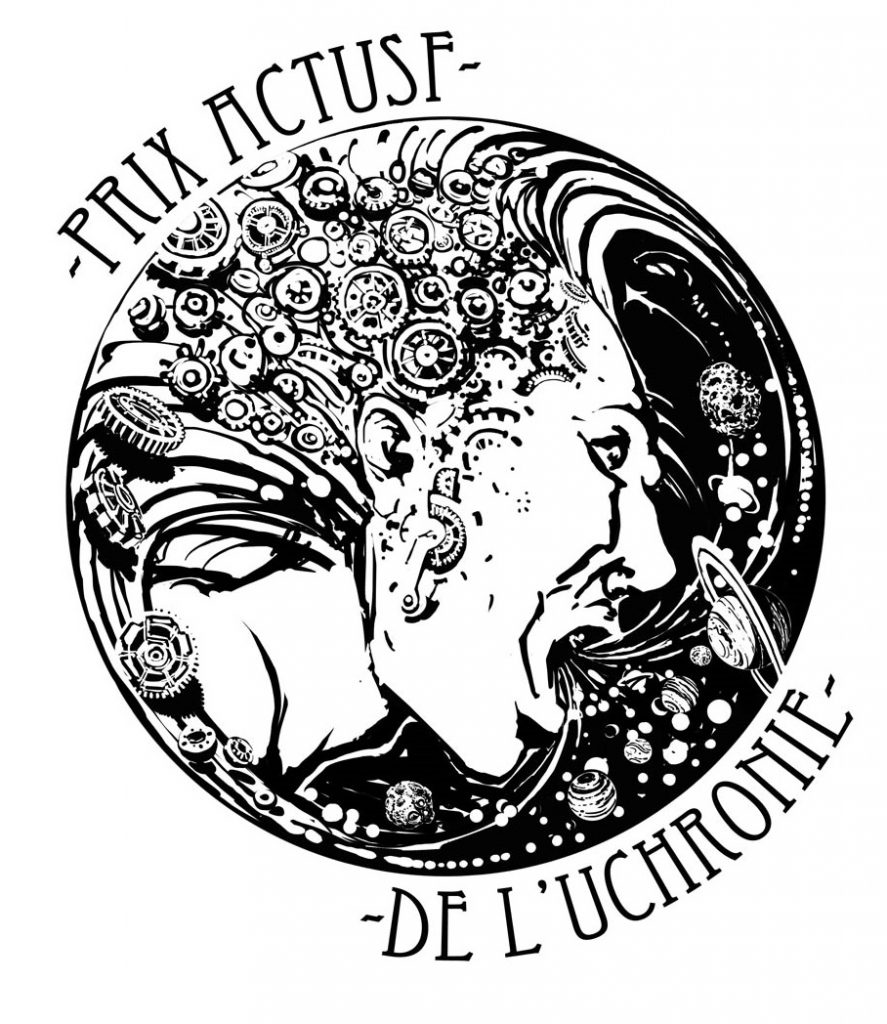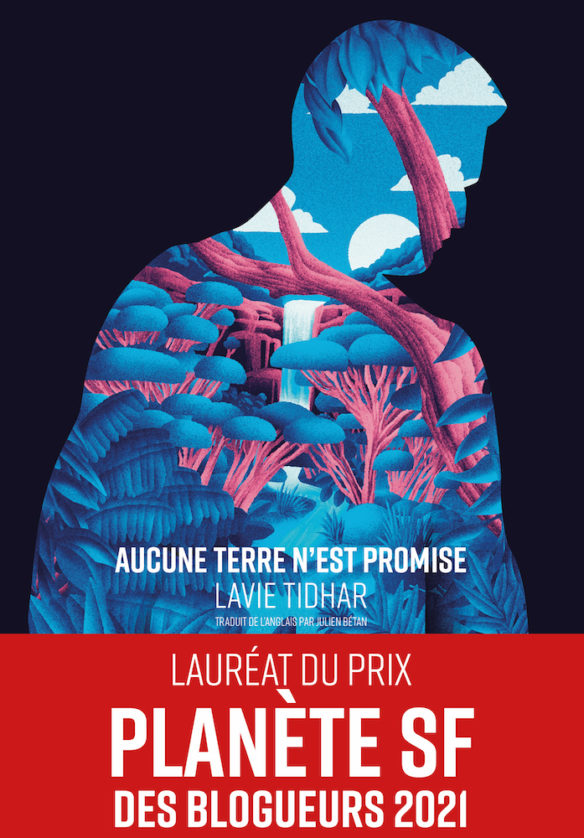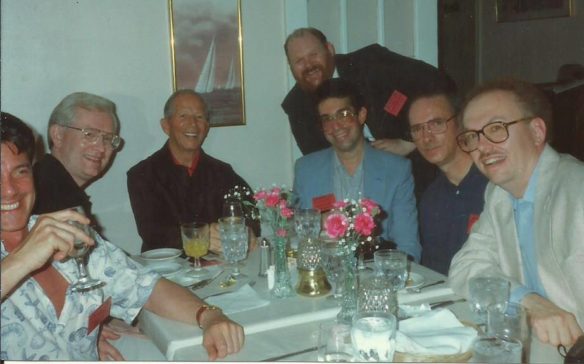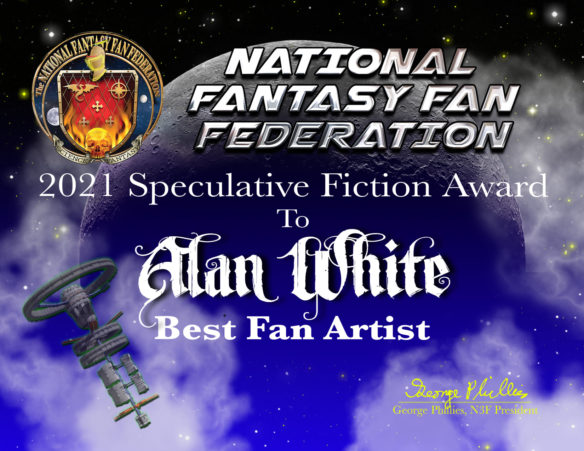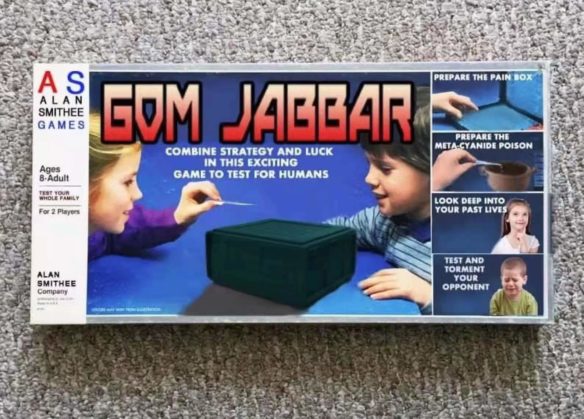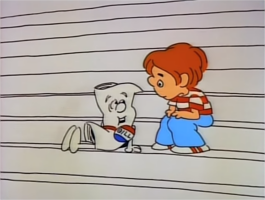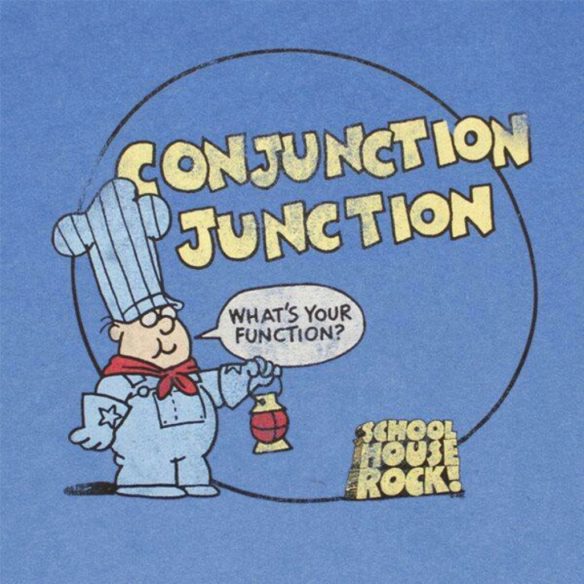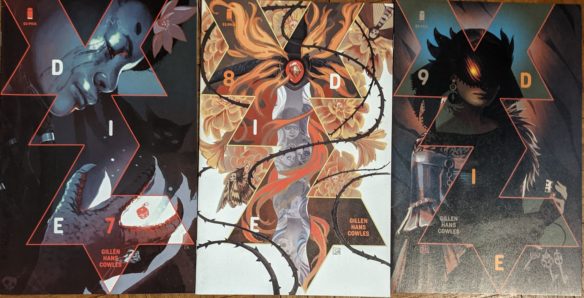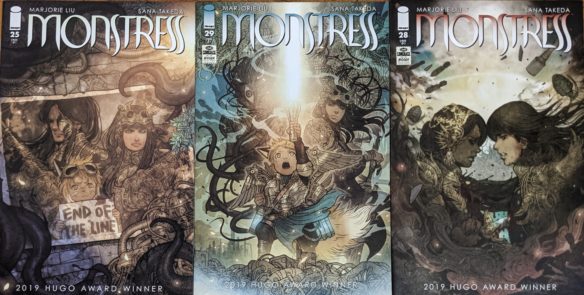[Editor’s note: At the eleventh hour, James wanted to encourage Hugo voters to get involved in the Best Graphic Story or Comics category.]
By James Bacon: [Reprinted from Journey Planet.] Well I have to say it’s an incredible year for Comics in the Hugo awards, I was pleased to see a number of comics which I had nominated going forward to be finalists but also I was very pleased to see that the Comics I didn’t nominate which went forward to be finalist happened to be on my shelves!
It’s very interesting to see how the Hugo voting constituency which obviously changes every year to a degree really has got a good sense of what is brilliant. The relevance of the Hugo Awards is becoming stronger within the Comics community people are aware of their importance who may not be fully aware of all the aspects which is fine because I’m not fully aware of every other awards aspects, but it’s always nice to see that recipients of the Hugo Awards have also been recognized by other awards, like the Eisners and Harveys and it’s amazing to see Hugo Award winner on the covers of comics!!
Of course, there are a number of titles I nominated which didn’t make this list and that was somewhat disappointing, but with a bit of reflection this is a phenomenal short list of Comics and I have to say, if you wanted to read some really good comics getting volumes one or two or in some cases one two three and four, and reading them is something I would really highly recommend especially if you haven’t read comics for some time, or if you’ve just drifted away, because these comics are telling very different stories, mixing genres that are not always directly associated with Comics even though they’ve always existed and in a number of cases are very far away from the easily pigeonholed superhero Comics people know more broadly.
So. To the comics.
DIE, Volume 2: Split the Party, written by Kieron Gillen and Stephanie Hans, letters by Clayton Cowles (Image Comics)
Die continued to be brilliant and has only just completed in September with issue #20. Kieron is an inspired writer and here he takes the concept of Roleplaying a step further. As noted by Gillen, the idea formulated from a conversation with artist Jaime McKelvie and the potential ending of the 1980s Dungeons and Dragons cartoon but with the characters older, having lived through an adventure and then looking back. It’s considerably darker and hauntingly brutal in places, not viscerally so per se, but in regard to the horridness of humans, the incisive eye to personal interactions and returning to ones youth, which let’s be honest is fun, fragile and yet fraught. To face or confront horrificness from one’s youth is something that is so very much of the real world current time, when so many young people have been badly damaged, transgressed, abused, now these decades able to confront the power and their stories be told.
The series came to an end in September, and while the finalist nomination is for Volume 2, itself a brilliant collection, the reader can now get the whole story. Kieron said he was ‘Sad that the adventure is coming to the end, but the wicked glee of finally being able to reveal all the bleak secrets we’ve been keeping’.
Without doubt a fabulous read, the last volume was noted as being characterized with ‘regrets and screaming’. Stephanie Hans artwork is unbelievably fluid, dynamic and captures action and interpersonal moments brilliantly, while bring this world to life fantastically. It’s such a nice clean line, so well drawn and just makes this comic sing. There was also somewhat of a community built and essays appeared, including one by Jeannette Ng (later in the series) which was great to see and read.
Ghost-Spider vol. 1: Dog Days Are Over, Author: Seanan McGuire, Artist: Takeshi Miyazawa and Rosi Kämpe (Marvel)
Volume one of Ghost Spider is issues 1-5 of the comic, and are a good point to get into Ghost Spider. A lot has occurred, to Gwen Stacey, but suffice to say she had been bitten by the spider that bit Peter Parker in Dimension 65 and things went, not so well for her, to the degree that she opts to go to college in Dimension 616, the Marvel Universe. Here Peter Parker is older, in college but also, alive, yet distinctly not her Peter, who she lost, tragically. She is still learning and her suit is symbiotic, and so a diet of cellulose is required to feed the suit and there is much fun and humour to the writing.
Gwen’s dad is a police captain, in 65 and has that world to worry about, with its own issues. The story weaves nicely, there is carry over from the previous run, but it is presented in a way that wonderful comic book way, that its might be worth going back, but the pace is upon you and one can read on, there is crime fighting, interaction and all is not actually safe for Gwen in Dimension 616, as The Jackal is hunting her, stalking her, and indeed is inveigled into the College, and has set up a college student to form a friendship with, and I suspect ultimately and betray Gwen.
It’s a cracking bit of fun, a lovely read, and McGuire does a fabulous job with Gwen and all the characters, and there is a lot going in, which Takeshi Miyazawa and Rosi Kämpe really deliver on, with clean dynamic art, a nice style to it, while capturing action and fights scenes with lucidity, protraction movement well, and also delivering on the smaller facial interactions that a story requires. You will need to crack onto Volume 2, or read all ten comics, it’s up to you for this story is not yet over. I should note that Ig Guara worked with Rosi Kämpe on issue 5 of the comic, so I’m not sure why their name is not included.
Invisible Kingdom, vol 2: Edge of Everything, Author: G. Willow Wilson, Artist: Christian Ward (Dark Horse Comics)
G. Willow Wilson is a phenomenal writer, and this is an inspired Science Fiction epic set in a solar system, told over three volumes, roughly fifteen comics. We continue the story of renegade Captain Grix an experienced and tough freighter pilot, and the younger religious acolyte, Vess, who following on from their discovery of the massive conspiracy between the all powerful Megacorporation and the most dominant ubiquitous religion are now on the run, being hunted down, but there are more issues and challenges facing them, and they have few friends and many enemies.
The first five issues were incredibly dense with ideas,a new world, a huge conspiracy, that is thoughtfully developed and cleverly done, reflecting the now in many ways into a fantastic world. The pace here evens out as the Sundog faces peril and pirates, and there are some very interesting sexual aspects explored, although there is a subtlety here and indeed, in some regards, relationships do not progress as a reader might expect. Christian Ward does space, crikey, he does it in amazing style, and takes the reader with the story, and he is incredibly competent at brilliantly putting the story into images, and it’s stunning. This feels like a building interval, and only makes one desire the third volume released as a complete graphic novel even more.
Monstress, vol. 5: Warchild, Author: Marjorie Liu, Artist: Sana Takeda (Image Comics)
Monstress is such a wonderfully realized world, so fantastical, but never too much, and with such incredibly beautiful art, it is continually a joy to read this comic. It’s amazing to think that it has been running now for six years, and yet it delivers.
Volume 5: Warchild, collects issues 25 to 30. The comic is destined to have a ‘Long Run’ and to be honest, I do not mind the pace of release of issues, although sometimes I have to work as I realize I missed one, but it is such a pleasure to turn to, to read and enjoy and issue 36 is due early next year.
These issues, well, many aspects are coming together, importantly, there is War at hand, the city of Ravenna is to be taken, but there is also so much unpacking and understanding to be shared in these issues, and it really went at it. The Federation are going to war with the Arcanics, and this will be brutal, with the fear of mutilation, slavery and ultimately death facing the Arcanics, but we also see and learn about the past with flashbacks, where we see what occurred with Zinn and Maika, while helping us understand what is going on in more depth at Raveanna.
It is so intricately weaved, it is brilliance, although brutality and the horror of war, are vitally important to this story, while allegiances and loyalties as well as the pieces all coming together to show broader understanding, meanwhile with characters, be it philosophy or ethics, or the true nature and how horrible beings can be to one another, all are touched upon, allowing the reader to find a depth that can be fascinating as well as a cracking read. Sana Takeda’s artwork, complements the brilliant writing of Marjorie Liu, the wordsmithing is only matched by such a fine and detailed line, artistically done, always bringing the reader deeper in, yet dynamic and ferocious when needed,
Once & Future vol. 1: The King Is Undead, written by Kieron Gillen, iIllustrated by Dan Mora, colored by Tamra Bonvillain, lettered by Ed Dukeshire (BOOM! Studios)
Bridgette McGuire is so much more than a brilliant character, I loved so much about her, that her past was murky, a Monster Hunter, knowledgeable in the matters of Britain and of course, intelligent and wise, and able to drag her young academic nice grandson Duncan into this wonderful Arthurian story at gunpoint if needed, and Rose, who is incredible, all really rounds this story as fab .
The power of a story or legend can be vitally important to people, so when a Nationalist group uses an artifact to summon a being back from the dead, once lost, thought dead in Myth, to usurp power, the fight is on. What is it to be a ‘Pure Briton’ and to desire Britain Back, well its interesting what a mythical king might consider to be pure.
Arthurian Legend is now Arthurian fact to be dealt with, the mysticism and mayhemic violence. With only 6 issues, in this volume it is a wonderful collection, but the story grows quickly and the characters are wonderful. This is Dark Fantasy with a really pungent level of science fiction when it comes to time, reflective of the now, without doubt, influenced by Brexit Britain, and also having a wonderful roster of characters. This is refreshing, with a British Asian, gay and non binary charcters, and a female protagonist, it’s a nice perspective that uses the story to make one think.
Dan Mora’s artwork is so clean, but he does medieval and armor fabulously, so much so, I went out after enjoying these comics and sought other works by him, while the action and colours are brilliant. This comic was a huge hit when it came out, issue no 1 having multiple editions, I think I have an sixth as well as first as I liked the cover, with Bridgette holding a sub machine gun…
Parable of the Sower: A Graphic Novel Adaptation, written by Octavia Butler, adapted by Damian Duffy, illustrated by John Jennings (Harry N. Abrams)
Octavia Butler is experiencing quite the resurgence amongst readers with these adaptations, anyone familiar with her work knows she is one of the greatest SF writers we ever had, and here the comics are reaching a new readership and proving hugely popular. The incredible team of Damian Duffy and John Jennings who gave us Kindred, continue to bring brilliance to the comic reading world. This is an emotional and strong work, deserving thought and reflection, and the art complements the words brilliantly, capturing one would hope, the author’s vision with skill, while the human interactions portrayed with understanding to ensure sharing the inter personal effectively. There is of course that amazing relevance, set in 2024, the book is a stunning read in 2021, so much is of the now, which in a way is inspired. Given where we were in January this year, and the previous four years of Trumpian lies and nationalism, the vision of financial and crucially environmental meltdown, with a total erosion of societal norm is utterly believable, and of course the causes, be it the inequality, corporate greed and of course climate change, has never felt so of the moment.
Our journey with Lauren Olamina, contains an epistolary element, as we read her thoughts as written in her journal, and she is living in a gated community, where people strive hard to live in this grim world, but that is going to get terribly upset. Lauren has hyperempathy a condition brought on by her mother’s use of the Paraceto drug, means she shares extreme emotions with others, it is interesting as there is ambiguity to this condition, a blessing or a course, an ability, or in some ways perhaps offering metaphorical thoughtfulness. We see her in an existential fight, facing horror and destruction, and of course carefully bringing in religion.
I love post apocalyptic stories at the best of times, but this is fresh, even though it is 28 years old. I loved how Lauren’s father is a Preacher, allowing a very interesting view of religion, which is a key area of speculation as we follow Lauren as she fights through the horror, but not only for herself. The art is wonderful, John Jennings does a really good job of portraying the world, as it could be, and there is real beauty in certain panels, while it is unflinching in its darkness when needed to complement this story.
It is really nice to feel that the stories I enjoyed, have been enjoyed by so many others, that there is a collective passion and pleasure from them, and I hope that this will transcend into the Worldcon at Washington itself. I am unsure who will be at the convention, but I hope that some of the creators involved get along and feel the appreciation from fans, because part of be genuinely feels, that no matter who wins the award, all are winners in this category.
